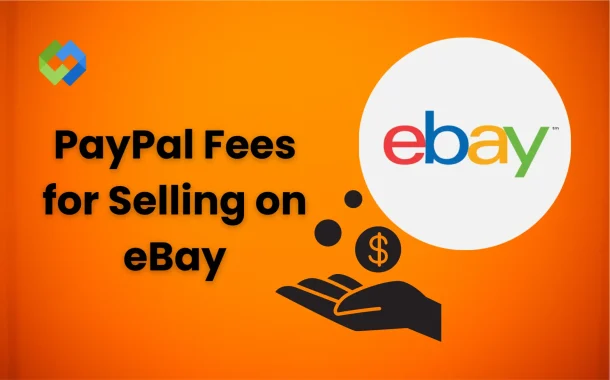High fees can reduce profits, making it necessary to plan accordingly. Knowing the exact costs helps sellers set the right prices and avoid unexpected charges. Some sellers may look for ways to lower these fees, such as using alternative payment methods.
Table of Contents
Table of Contents
PayPal Fees on eBay
PayPal charges fees for processing payments on eBay. When a seller receives money, PayPal deducts a percentage of the sale along with a fixed fee. The amount depends on factors like the buyer’s location, transaction type, and currency used. Domestic transactions have lower fees, while international payments cost more due to currency conversion. These fees are deducted before the seller receives payment.
International sales come with extra costs. If a buyer pays in a different currency, PayPal converts the payment and charges a fee. Chargeback fees may also apply if a buyer disputes a transaction. These additional costs can affect profits, so sellers need to factor them into their pricing strategy.
Understanding these fees is important for eBay sellers. High transaction costs reduce profits and make competition harder. Some sellers adjust prices to cover fees, while others explore cheaper payment options. Using a business account may also help lower costs.
Types of PayPal Fees for eBay Sellers
1. Transaction Fees
PayPal charges a transaction fee on every sale made through eBay. This fee includes a percentage of the total sale amount plus a fixed fee per transaction. Domestic sales usually have lower fees, while international sales cost more due to additional processing charges. Sellers must consider these fees when setting prices to ensure they maintain a good profit margin.
2. Currency Conversion Fees
If a buyer pays in a different currency, PayPal automatically converts the amount and charges a currency conversion fee. This fee is based on exchange rates and PayPal’s markup on currency conversion. International sellers often face higher costs due to these additional charges, making it important to check the exchange rate before completing a sale.
3. Chargeback Fees
If a buyer disputes a transaction, PayPal may apply a chargeback fee. This happens when a buyer claims a refund due to an issue with the product, an unauthorized transaction, or other reasons. Chargeback fees can be costly, and frequent disputes may also impact a seller’s account status. Sellers should provide clear product descriptions and excellent customer service to reduce the chances of disputes.
4. Micropayment Fees
For small transactions, PayPal offers a special micropayment fee structure. This is useful for sellers dealing with low-cost items, as it reduces the percentage-based fee on small sales. However, these fees can still add up over time, so sellers should evaluate if this pricing model is the best fit for their business.
How PayPal Fees Are Calculated
PayPal fees for eBay sellers depend on the type of transaction, the buyer’s location, and the currency used. For domestic sales, PayPal typically charges 2.9% of the total amount plus a fixed fee of $0.30 per transaction. For international sales, the fee is higher, usually around 4.4% plus a fixed fee that varies by country. These charges are automatically deducted before the seller receives the payment.
International transactions also involve currency conversion fees. If a buyer pays in a different currency, PayPal converts the payment and charges an additional 3% to 4% on top of the exchange rate. This can significantly impact the final amount a seller receives. Checking PayPal’s latest fee structure is essential for sellers who deal with international customers.
Other fees to consider include chargeback fees and refund fees. If a buyer disputes a transaction, PayPal may deduct a chargeback fee, which varies depending on the case. When issuing a refund, PayPal does not return the original transaction fee, meaning sellers still lose part of their earnings. These extra costs make it important for sellers to price their products carefully.
Ways to Reduce PayPal Fees on eBay
Use a PayPal Business Account
Upgrading to a PayPal business account can sometimes offer lower transaction fees, especially for sellers with high sales volume. PayPal may provide discounted rates based on monthly sales, reducing overall costs. Checking PayPal’s fee structure for business accounts can help sellers find better pricing options.
Opt for Micropayments for Low-Cost Items
For sellers dealing with small transactions, PayPal’s micropayment fee structure can be more cost-effective. Instead of the standard 2.9% + $0.30 per transaction, micropayments have a lower percentage fee, making it ideal for sellers with low-cost products. Applying for this option can help reduce transaction fees.
Avoid Unnecessary Currency Conversion
PayPal charges a 3% to 4% currency conversion fee for payments in different currencies. To avoid this, sellers can list prices in their primary currency or use a multi-currency account. This minimizes conversion costs and ensures they receive more from each sale.
Price Products Strategically
Since PayPal fees are deducted from each transaction, sellers can adjust their pricing to cover these costs. Adding a small percentage to product prices ensures that fees do not significantly impact profits. Being aware of all applicable PayPal charges helps sellers set prices effectively while remaining competitive.
Conclusion
PayPal fees are an important part of selling on eBay. They include transaction fees, currency conversion charges, and possible chargeback costs. These fees can reduce profits, especially for international sales. Sellers must understand these charges to manage their earnings effectively.
To reduce PayPal fees, sellers can use a business account, opt for micropayments, and avoid currency conversion when possible. Choosing alternative payment methods and adjusting product prices can also help. Knowing how PayPal fees work allows sellers to plan better and keep more of their earnings while selling on eBay.














